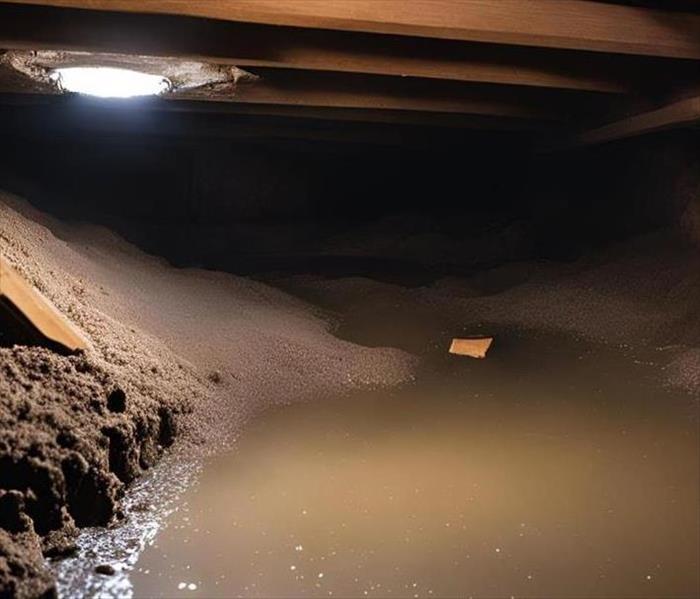Water in Your Crawlspace, Basement, or Below Grade
10/29/2024 (Permalink)
Water can leak into your basement or crawlspace from both interior and exterior sources. The most common sources of water in basements are leaking pipes, washing machines, or other plumbing fixtures. Exterior sources, such as improperly placed downspouts, poor grading, leaking hose bibs, or groundwater, can lead to unexplained wet conditions inside of your property.
Most homeowners can quickly spot water in their basements, but when there is water in a crawlspace, it may go unnoticed for months, possibly years. Even a small amount of standing water can cause damage to the foundation, rot exposed wooden support beams and create the perfect breeding ground of mildew and dangerous mold. Mold and mildew can impact the air quality inside of the home, which can lead to health problems.
If you discover standing water, it’s important to identify where it’s coming from, and take necessary corrective action to stop the flow. This might include smaller jobs such as patching cracks or fixing pipes, or it may take more drastic steps such as regrading or relocating drainage pipes. Regardless of which is needed, you should do so quickly.
Once the source of water is stopped, the next step is to call SERVPRO®. We’ll send out a crew of experienced water mitigation technicians, people who understand how to properly dry the structure and remove excess humidity. In cases where the water is pooled, the crew will pump out the excess before beginning the drying process. This speeds things up and minimizes hazards to the workers.
If they identify mold during their inspection, the area will be sealed off to prevent any further spread, until it can be mitigated. The process will take several days or longer, depending on the extent of the water damage, and removal of some building materials may be necessary. Once the structure is completely dry and mold-free, they might recommend a vapor barrier or other venting be added to prevent future problems.

 24/7 Emergency Service
24/7 Emergency Service
